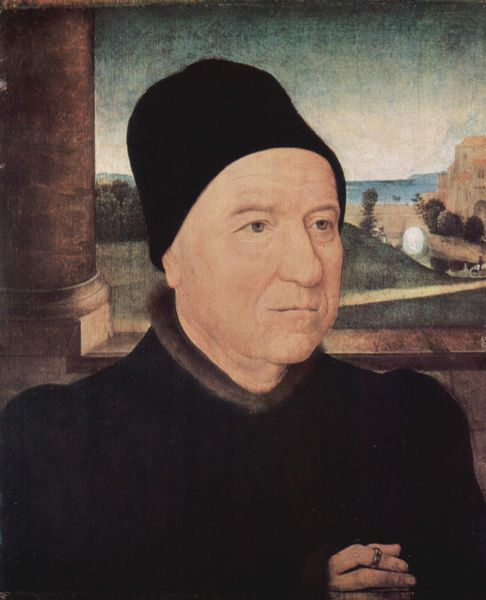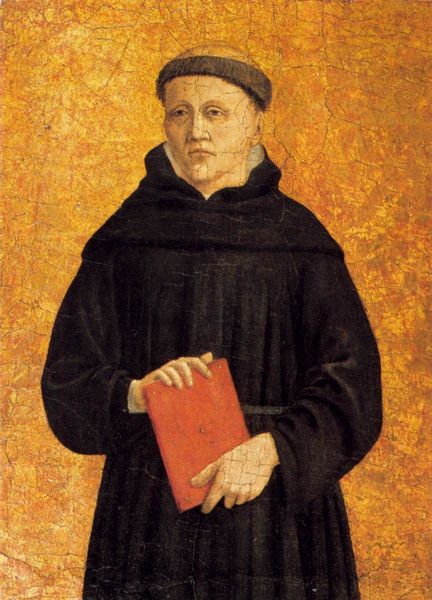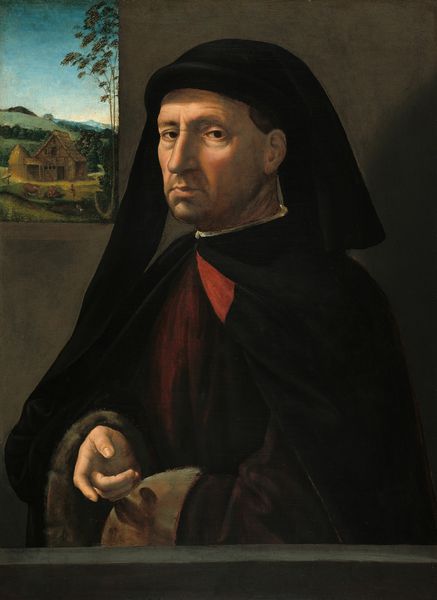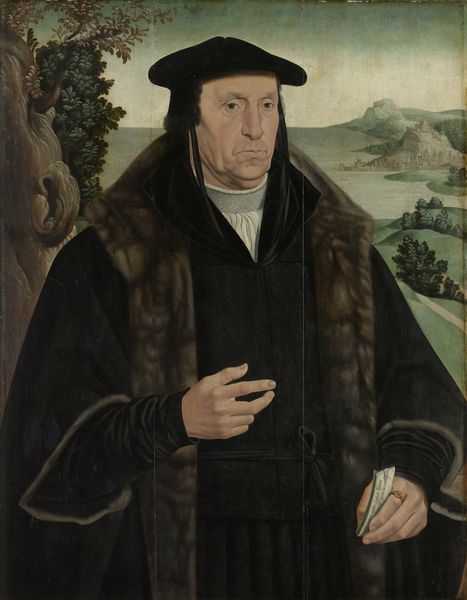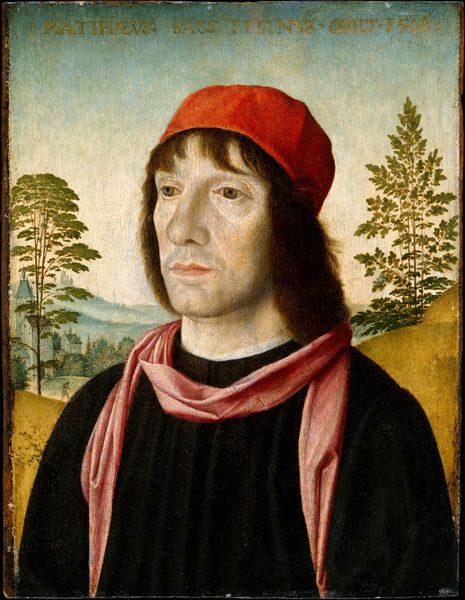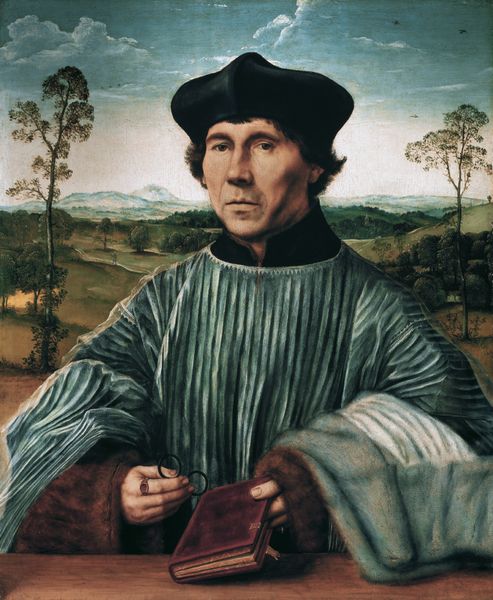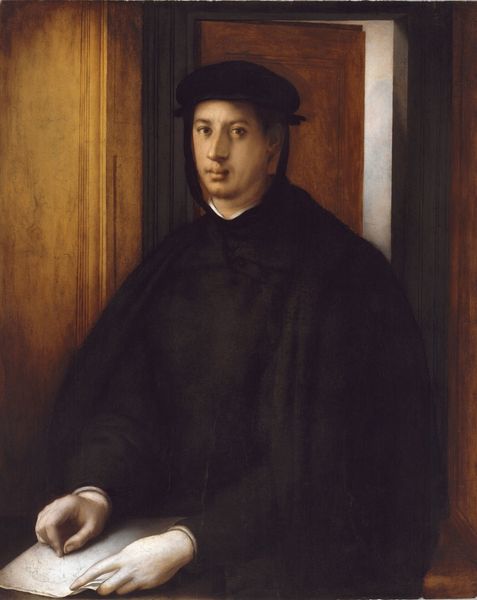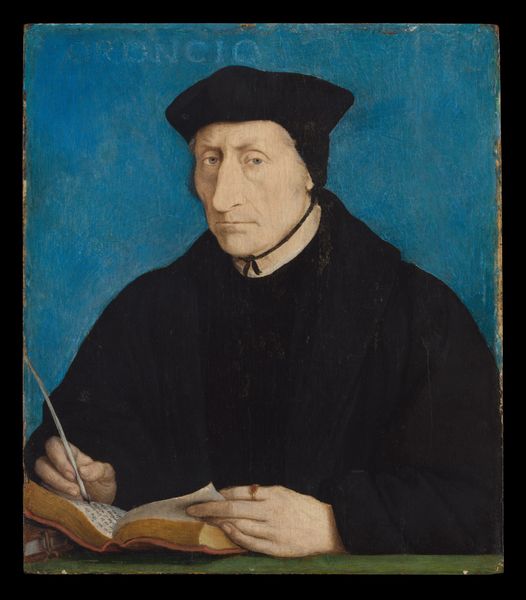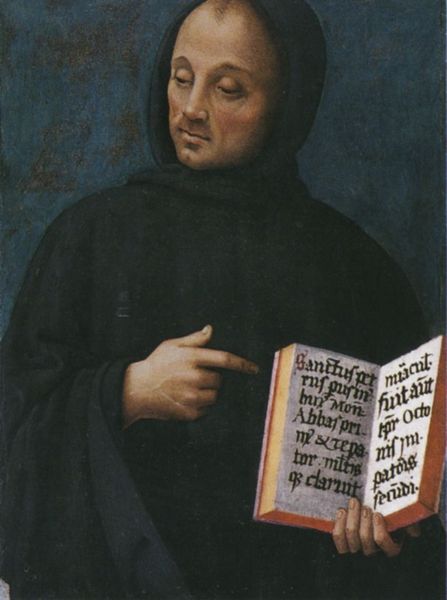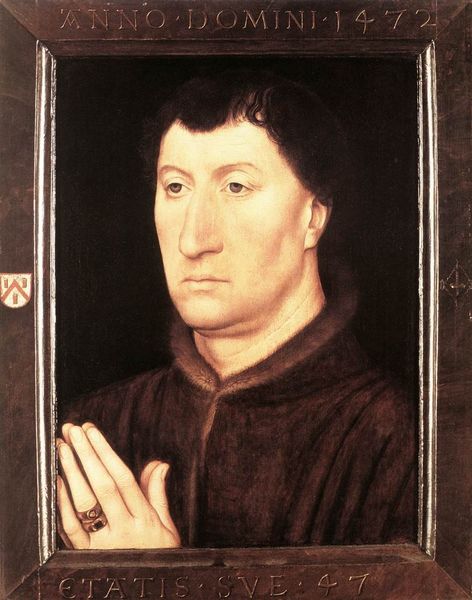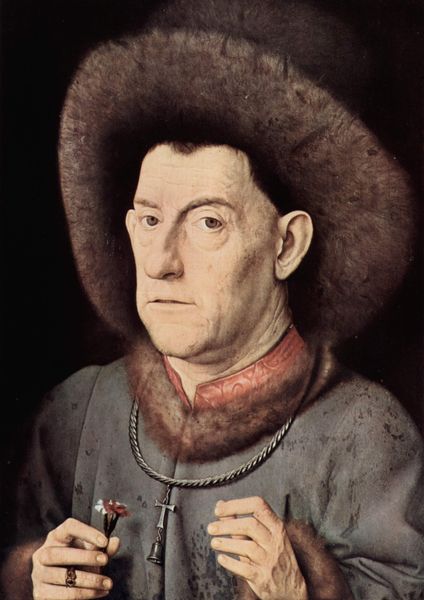
painting, oil-paint
#
portrait
#
high-renaissance
#
venetian-painting
#
painting
#
oil-paint
#
oil painting
#
male-portraits
#
italian-renaissance
#
early-renaissance
#
portrait art
Dimensions: 49.5 x 63 cm
Copyright: Public domain
Curator: Let's turn our attention to this portrait by Giovanni Bellini, painted around 1515. It's titled "Portrait of Fra Teodoro da Urbino," and you can currently find it here in the National Gallery. Editor: Immediately, the serenity of the face strikes me. He has kind, world-weary eyes, like he's seen empires rise and fall, all while holding a very important book and an immaculate lily. What is this potent tranquility? Curator: Bellini’s depiction invites considerations of identity, virtue, and religious dedication within the social fabric of Renaissance Italy. Fra Teodoro, a member of a religious order, is portrayed with symbols representing purity and wisdom. Bellini likely aimed to present him not just as an individual, but also as a representative of the ideals his order embodied. Editor: Right, that lily… is it more than just decorative? It sort of screams, doesn't it? The bright white against the subdued background creates an interesting focal point, competing with his face, drawing you to examine both virtue and earthly knowledge. Curator: Precisely. It underscores a tension perhaps: the negotiation between spiritual aspiration and engagement with the world through learning. The inclusion of the book invites questions regarding the role of literacy, knowledge, and scripture in shaping religious identity and authority during this period. How do textual traditions shape one's sense of self and their community? Editor: And that vibrant green backdrop! Feels very decorative for such a somber man, almost like looking through a window to a secret garden in his mind. A garden perhaps overflowing with thoughts. I wonder, was that common? A floral background for the clergy? Curator: We have to consider how Venetian art broke away from the earlier rigidity; the vibrant background acts as a signifier of wealth, class, and even power. It signals the sitter's importance. I mean, the guy has his own halo! Editor: Ah yes, the halo… a gentle nod from divinity. And the way Bellini captures light, even after all these centuries, it feels intimate. You see more than just paint; you sense the spirit they aimed to immortalize. Curator: Absolutely, and while art history guides interpretation through contexts, styles, or provenances, it’s equally important to recognize our emotional, subjective responses to it. We should embrace that multifaceted understanding. Editor: Indeed. Looking at Fra Teodoro, he evokes a stillness and reflective quality, something undeniably resonant even today. Thanks to both Bellini and Teodoro, some mysteries still bloom on canvas.
Comments
No comments
Be the first to comment and join the conversation on the ultimate creative platform.
